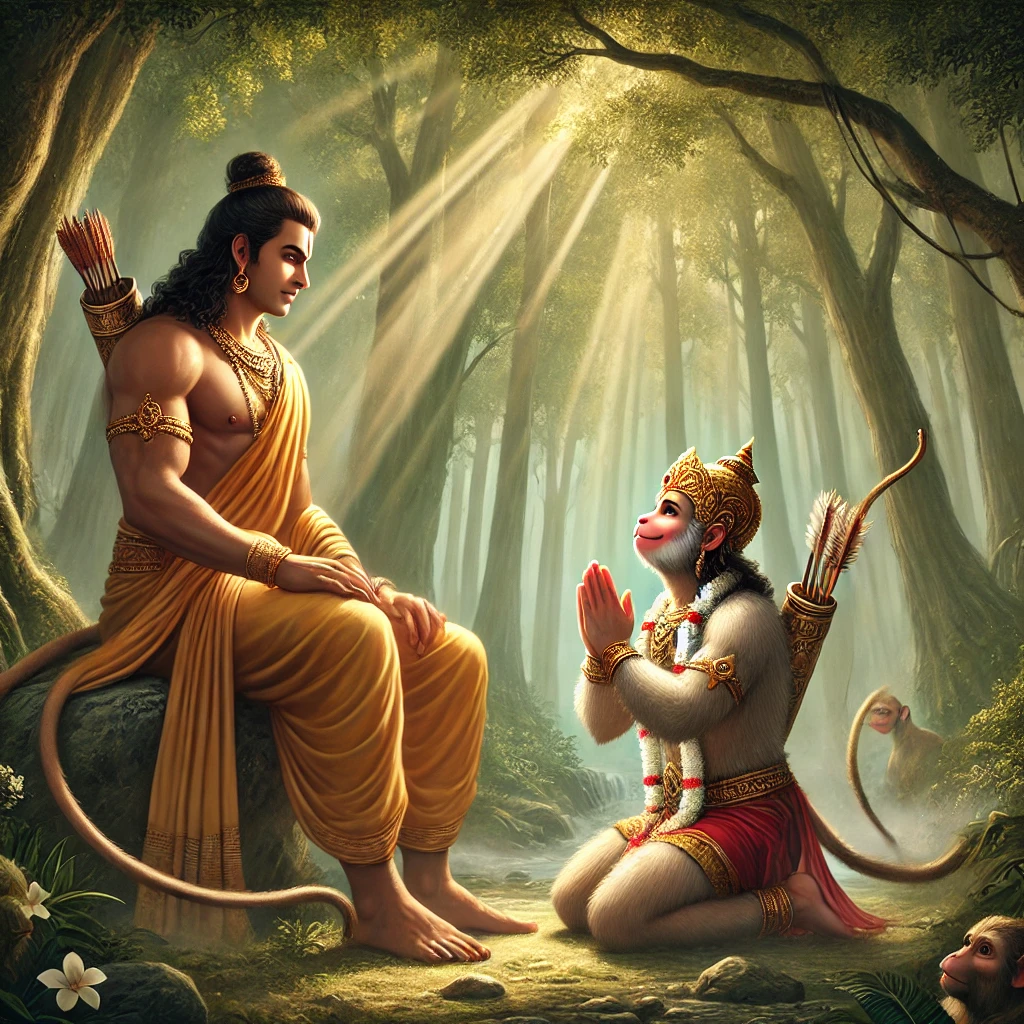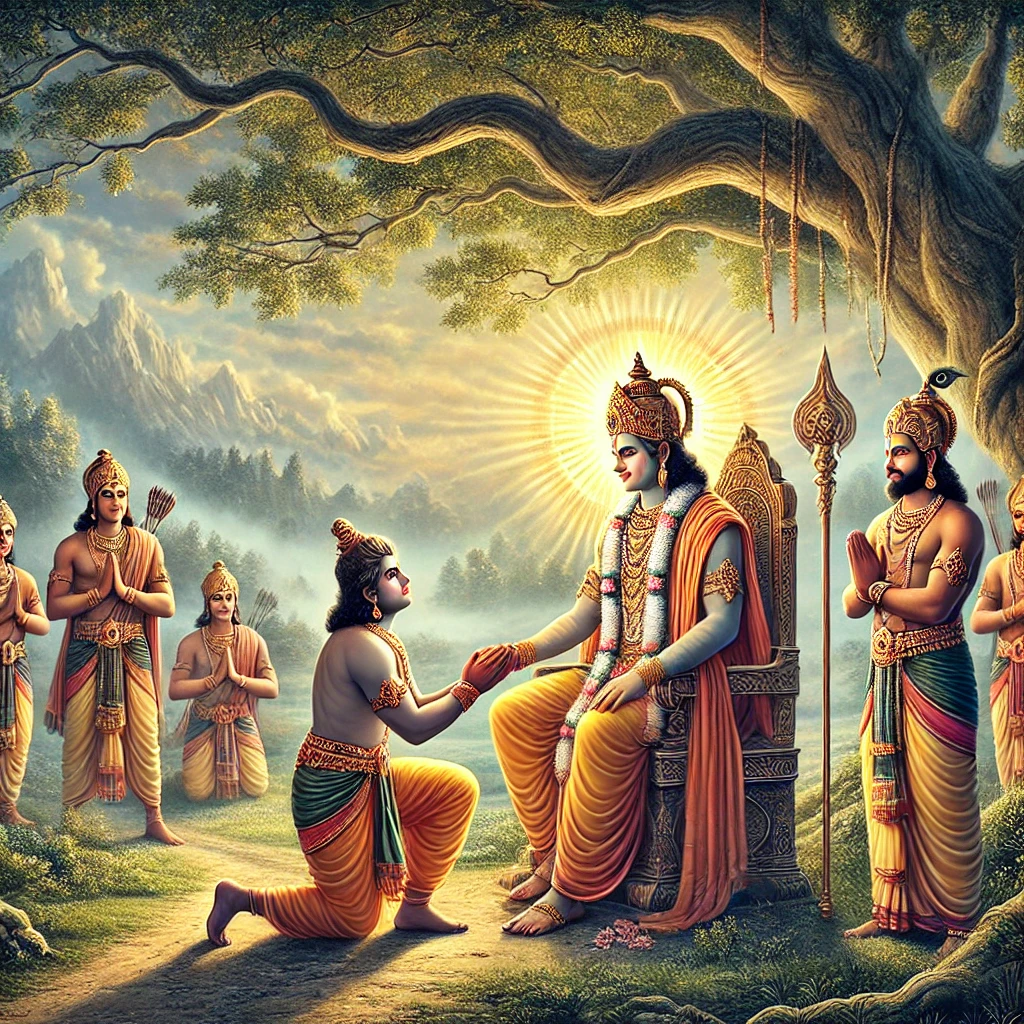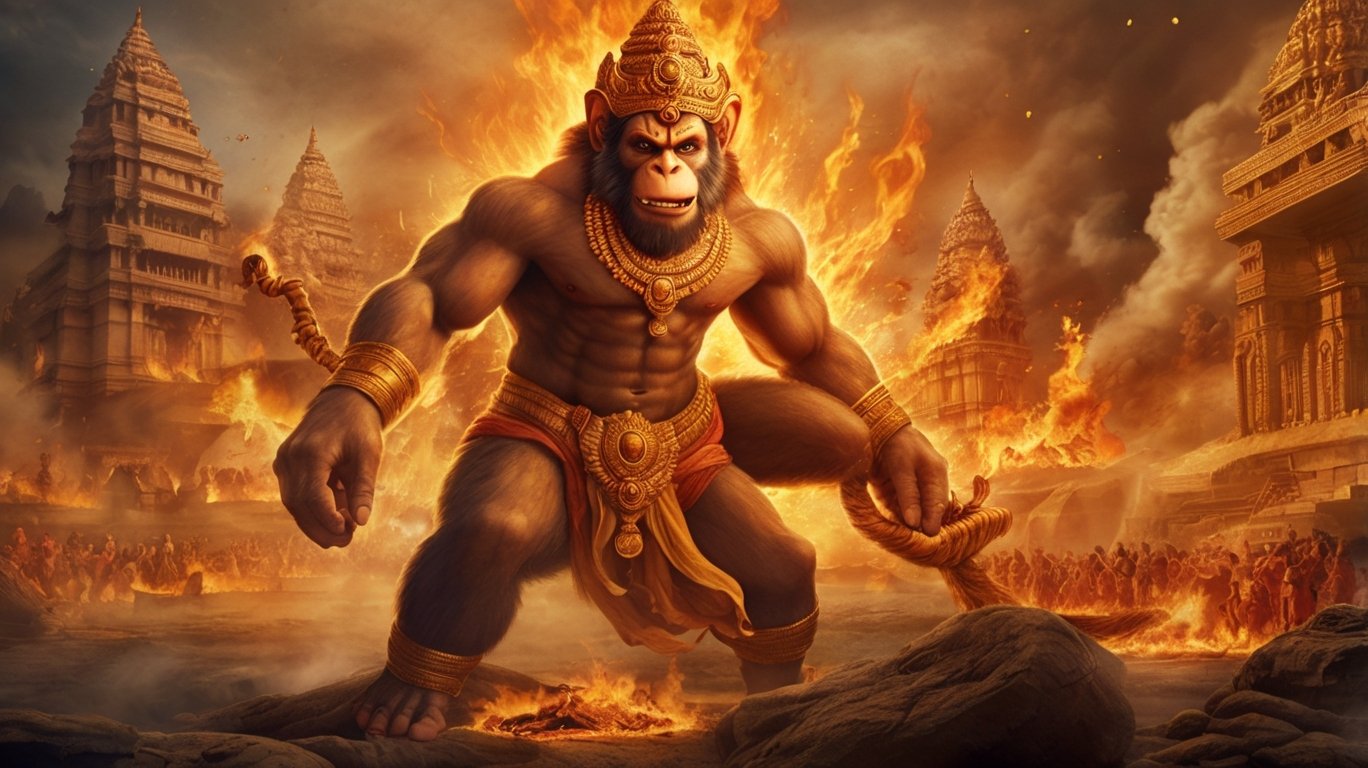Table of Contents
Introduction – Lord Shiva
If you have ever seen a picture or statue of Lord Shiva, you might have noticed something unique—his throat is blue. This is not just a random detail. Shiva’s blue throat, known as Neelkantha (meaning “the blue-throated one”), is one of the most famous symbols in Hindu mythology. But why does Shiva have a blue throat? What is the story behind it? In this blog, we will explore the legend, symbolism, and deeper meaning of Shiva’s blue throat in simple English, using popular keywords like “Shiva blue throat story,” “Neelkantha meaning,” and “why is Shiva’s throat blue.”
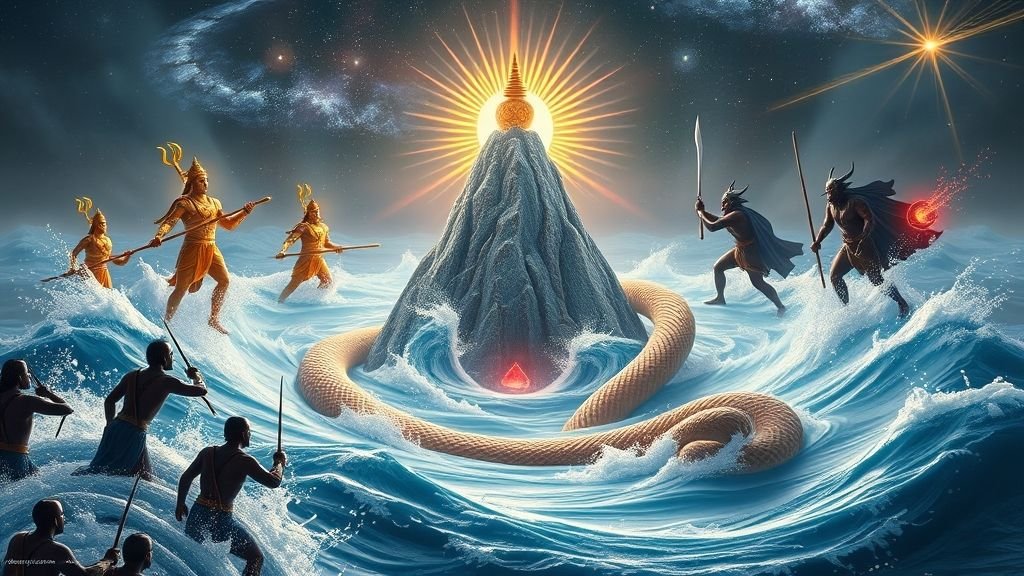
The Legendary Story: Samudra Manthan and the Halahala Poison
The Churning of the Ocean (Samudra Manthan)
Long ago, there was a time when both gods (Devas) and demons (Asuras) wanted to become immortal. They learned that the nectar of immortality, called Amrit, was hidden deep inside the cosmic ocean, known as Ksheer Sagar. To get the nectar, both sides agreed to work together and churn the ocean—a process called Samudra Manthan.
- Mount Mandara was used as the churning rod.
- Vasuki, the king of serpents, became the rope.
As the churning began, many wonderful things came out of the ocean—gems, gold, divine animals, and even Goddess Lakshmi. But suddenly, something terrible happened.
The Emergence of Halahala Poison
Instead of the nectar, a deadly poison called Halahala (also called Kaalkoot) came out first. This poison was so powerful that it could destroy the entire universe. The gods and demons were terrified. No one could go near it, and everyone feared that the world would end.
Shiva’s Sacrifice: Drinking the Poison
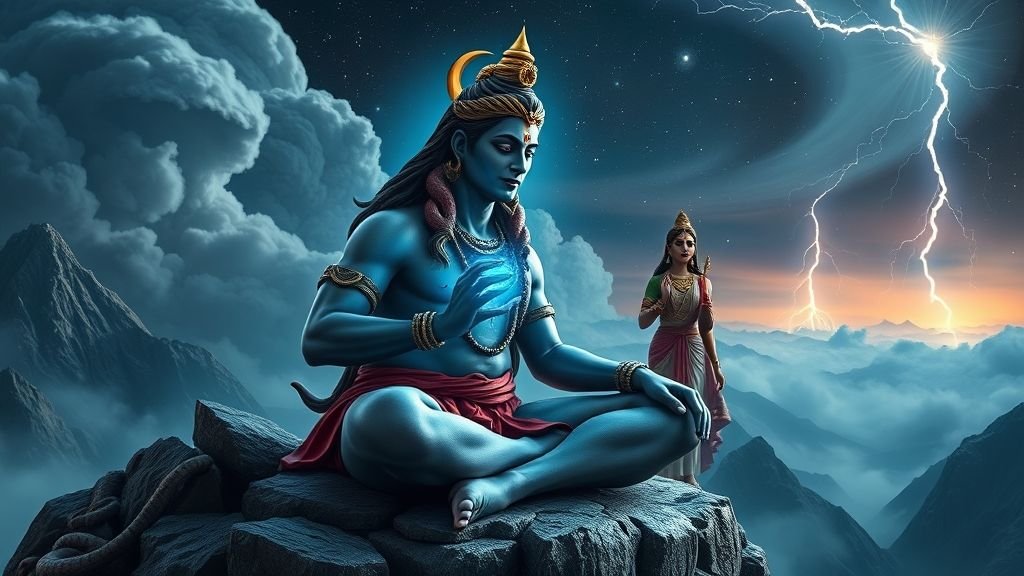
In desperation, the gods and demons turned to Lord Shiva for help. Shiva, known for his compassion and courage, did not hesitate. He decided to drink the poison to save the world from destruction.
But the poison was so strong that it started burning Shiva from the inside. To stop the poison from spreading through his body, his wife, Goddess Parvati, quickly held his throat. The poison stayed in his throat, turning it blue, but Shiva did not let it harm anyone else.
From that day, Shiva became known as Neelkantha—the one with the blue throat.
The Symbolism of Shiva’s Blue Throat
1. Courage and Sacrifice
Shiva’s act of drinking the poison shows his selflessness. He was ready to suffer himself so that the world could be saved. This teaches us about the power of sacrifice and putting others before ourselves.
2. Absorbing Negativity
The blue throat is a symbol of how Shiva can absorb all the negativity and poison in the world, yet remain unaffected. He does not let the poison destroy him or the world. This shows his strength and ability to handle even the worst situations.
3. Compassion and Protection
Shiva’s willingness to take the poison for the sake of others is a sign of his deep compassion. He is seen as a protector who will do anything to keep the universe safe.
4. Resilience and Transformation
The story of Shiva’s blue throat is also about resilience. Even after drinking the poison, Shiva remains calm and composed. He transforms the poison into a symbol of strength, showing that we too can turn our problems into power.
5. Balance of Opposites
Shiva’s blue throat represents the balance between creation and destruction, good and bad, positive and negative. He holds both within himself, showing the importance of balance in life7.
Insights and Facts: What Makes Neelkantha Special?
Shiva’s Many Names
- Neelkantha means “the blue-throated one.”
- Shiva is also called Mahadev (the great god), Shankar, Bholenath, and more1.
Role of Parvati
Goddess Parvati plays a key role in the story. By holding Shiva’s throat, she stops the poison from spreading, saving Shiva and the world.
Why Only the Throat?
Shiva did not swallow the poison completely. He held it in his throat to prevent it from harming his body or the universe. This is why only his throat turned blue, not his whole body.
Connection to Yoga and Meditation
Shiva’s blue throat is also seen as a symbol in yoga. The throat is where the Vishuddha chakra (throat chakra) is located. This chakra is about communication, truth, and purification. Shiva’s act is seen as the ultimate purification—holding negativity but not letting it affect the mind or heart.
Art and Iconography
In paintings and statues, Shiva is always shown with a blue throat. This makes him easy to recognize and reminds devotees of his great sacrifice.
Life Lessons from Shiva’s Blue Throat
Facing Challenges with Courage
Just like Shiva, we all face “poisons” in life—difficulties, pain, and negativity. The story teaches us not to run away from our problems but to face them bravely.
Transforming Negativity
Instead of letting negativity ruin us, we can learn to hold it, understand it, and transform it into something positive. This is the real meaning behind Shiva’s blue throat3.
Compassion and Selflessness
Helping others, even when it is hard, is a sign of true strength. Shiva’s story inspires us to be compassionate and selfless in our lives.
Balance and Control
Shiva shows us the importance of balance. Even after drinking poison, he remains calm. This is a lesson in controlling our emotions and staying balanced in tough times.
Frequently Asked Questions (FAQs)
Why is Shiva called Neelkantha?
Shiva is called Neelkantha because he drank the deadly poison Halahala during the churning of the ocean and held it in his throat, which turned blue.
What is the meaning of Neelkantha?
Neelkantha means “the blue-throated one.” It refers to Shiva’s blue throat after he drank the poison to save the world.
What is the significance of Shiva’s blue throat?
The blue throat is a symbol of sacrifice, courage, compassion, and the ability to absorb negativity without letting it harm oneself or others.
Did the poison harm Shiva?
The poison was very powerful and dangerous, but Shiva’s divine powers and Parvati’s help prevented it from harming him. It only turned his throat blue.
Conclusion: The Eternal Message of Neelkantha
The story of Shiva’s blue throat is more than just a myth. It is a powerful lesson in courage, sacrifice, and compassion. Shiva teaches us that true strength is not about avoiding problems but facing them head-on. By absorbing the world’s poison, Shiva shows us how to transform negativity into something meaningful.
Whenever you see a picture of Shiva with his blue throat, remember the story of Neelkantha. It is a reminder that with courage, compassion, and balance, we too can rise above life’s toughest challenges.
Final Thought
Shiva’s blue throat is not just a mark of his divinity, but a lesson for all of us. It teaches us to face our “poisons” with courage, to help others selflessly, and to stay balanced no matter how difficult life gets. In the end, the blue throat of Shiva is a symbol of hope, strength, and the power of transformation.
If you enjoyed learning about why Shiva has a blue throat, share this blog with your friends and family. Let’s spread the message of Neelkantha and inspire more people to find courage and compassion in their own lives!


